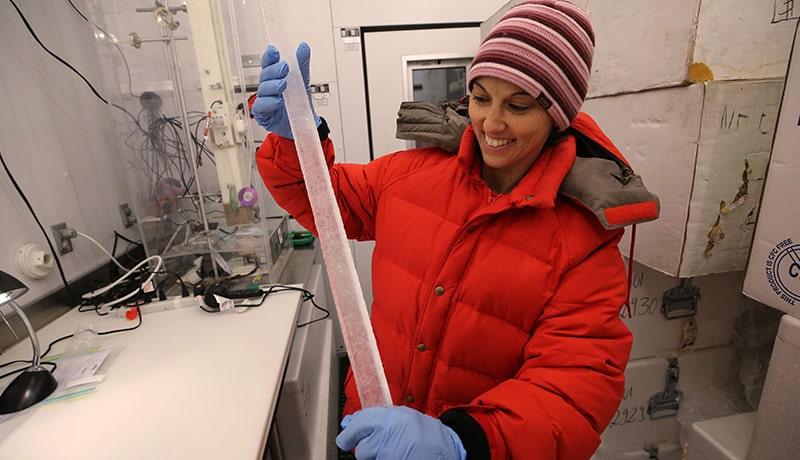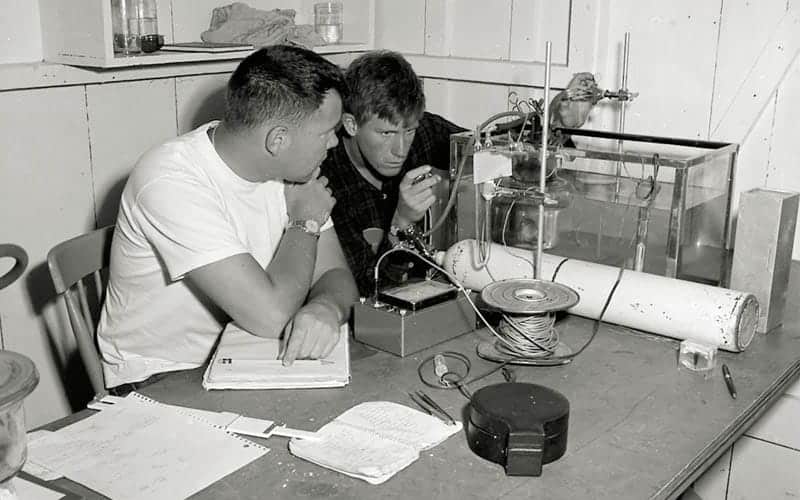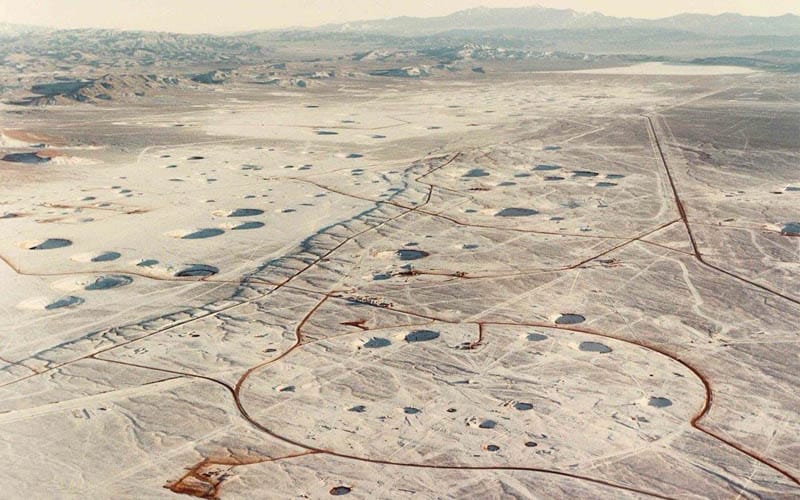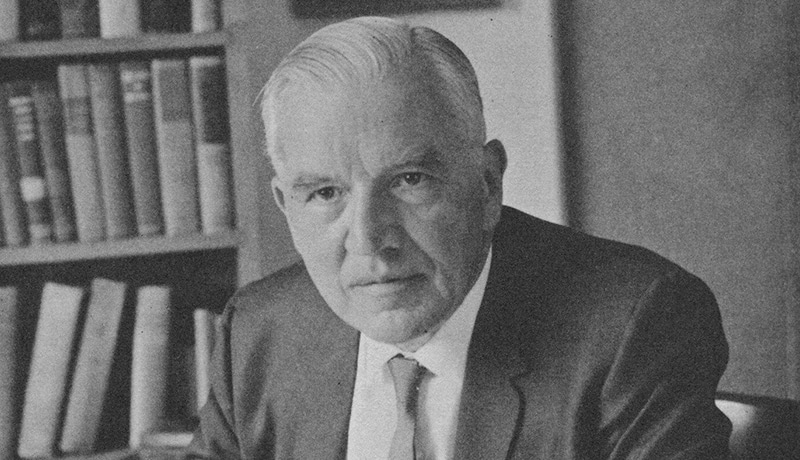DRI’s History
1969 – 1978

1969
DRI became an autonomous branch of what was then the University of Nevada System. Today, DRI is one of eight independent institutions in the Nevada System of Higher Education.
1975
DRI participated in the first Greenland Ice Sheet Project, sponsored by the National Science Foundation, which aimed to collect a continuous core of Greenland ice and study it for clues about Earth’s past climate. DRI continued work in this project throughout the 80s and 90s and has since become a world leader in ice core research and analysis.
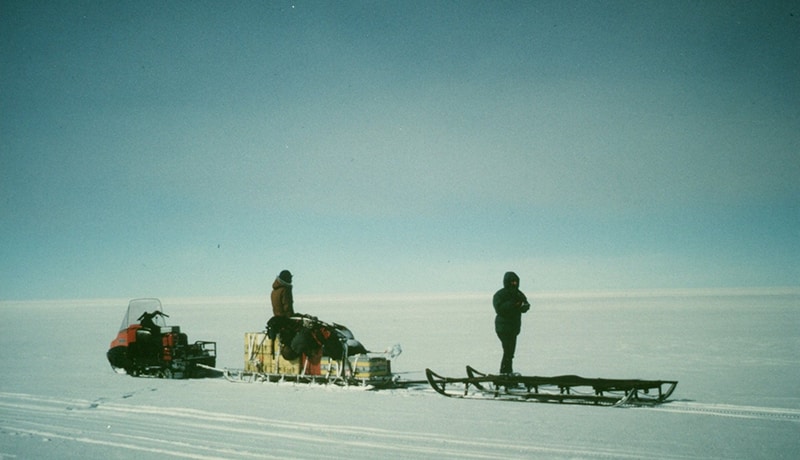
1977
Drought conditions prompted Governor Mike O’Callaghan to authorize the first Emergency Cloud Seeding Project, led by DRI. This project leveraged DRI’s years of research in cloud seeding and has since evolved into the State of Nevada Cloud Seeding Project which seeds Nevada watersheds every winter to enhance snowpack.
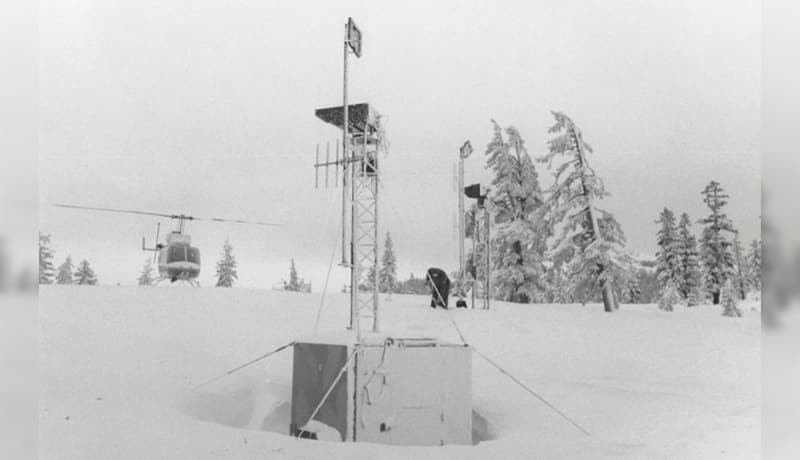
1977
DRI began cultural resources management for the Department of Energy in the area now known as the Nevada National Security Site. This landscape holds a range of cultural resources from the earliest known prehistoric societies in North America circa 13,000 years ago to historic times, including Native American occupations, early Euro-American exploration, mining booms, ranching, and Cold War-era nuclear testing.
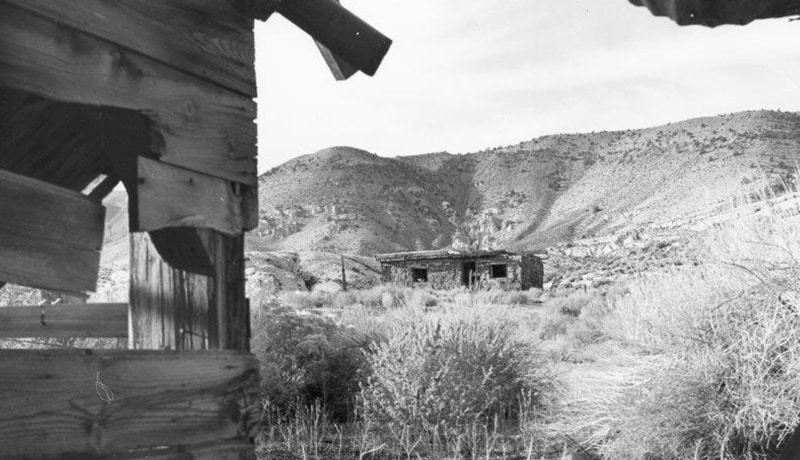
1979 – 1988
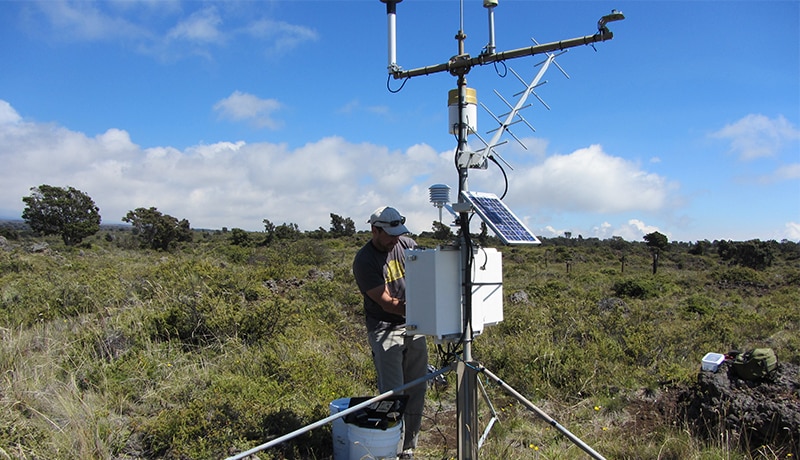
1986
DRI became home to the Western Regional Climate Center, one of six such centers run by the National Oceanic and Atmospheric Administration (NOAA). The WRCC stores climate and weather data, coordinates climate services across 11 Western states, and conducts applied research on weather and climate topics.
1986
DRI scientists pioneered the use of chemical fingerprinting, a technique to identify the relative contributions of different pollutants to overall pollution mass and the movement of pollutants to their eventual points of impact. This work has become the basis of air quality management in Nevada’s urban areas and has been applied to mitigate haze in some of the world’s most scenic places like the Rocky Mountains.

1988
DRI archaeologist Alan Simmons, Ph.D., made the cover of Science magazine for his work at the site of Ain Ghazal in Jordan. His team’s excavation at this site, which dates back to the Neolithic period, helped shed light on early peoples’ adoption of domestic plants and animals as primary subsistence sources.
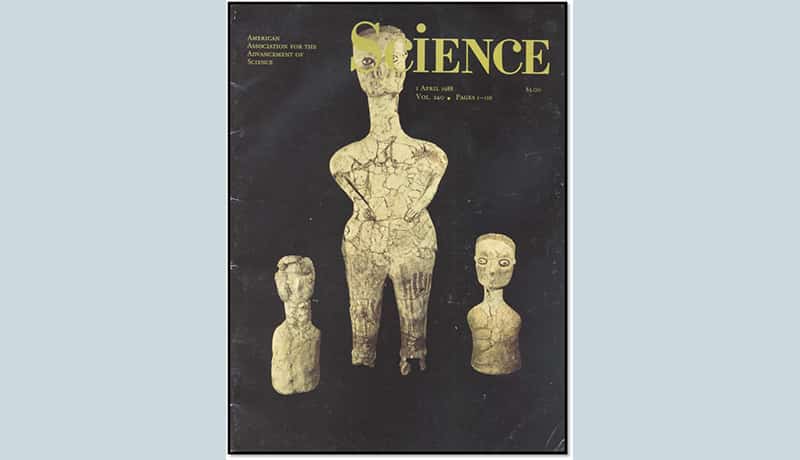
1988
DRI presented the first ever Nevada Medal, an annual national award designed to enhance Nevada’s prestige in the scientific community and recognize outstanding scientific achievement. The first Nevada Medalist was Verner E. Suomi, Ph.D., the father of satellite meteorology.

1989 – 1998
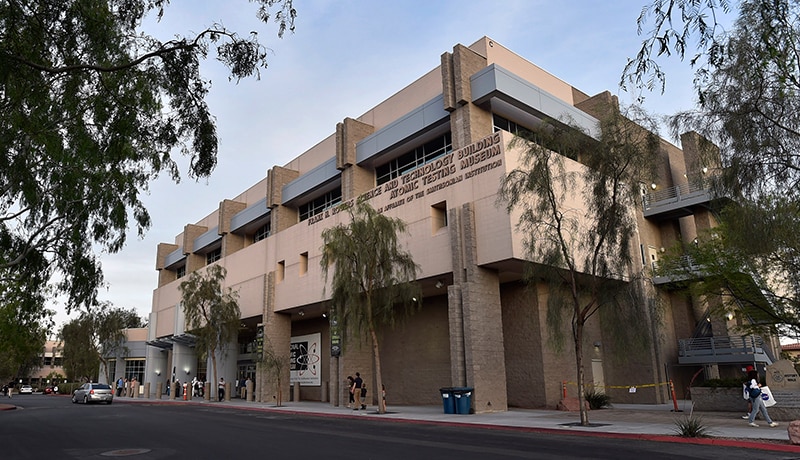
1992
DRI’s Las Vegas faculty moved into the Southern Nevada Science Center, the first facility in the city designed specifically for scientific research.
1994
DRI became one of only a handful of institutions in the country equipped with luminescence dating capabilities, which allow researchers to determine the ages of materials too old for carbon dating and learn about past climate shifts, earthquakes, and volcanic eruptions. This work continues at DRI in what is now the E.L. Cord Luminescence Lab.
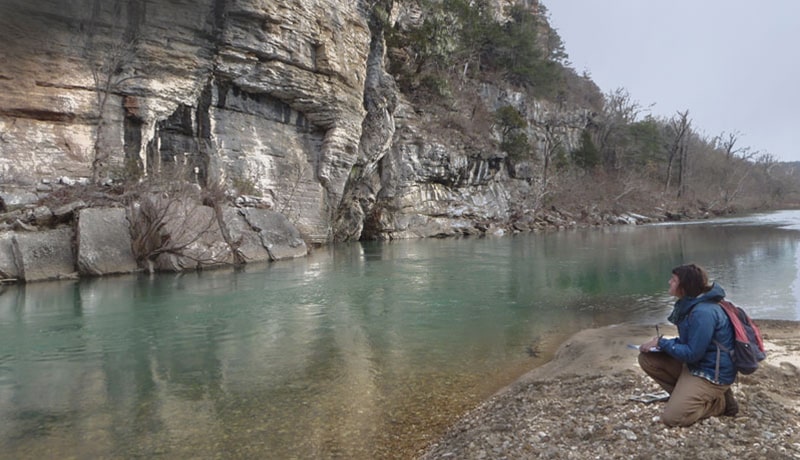
1995
DRI scientists successfully used satellite-based and airborne remote sensing to find suitable drinking water wells for communities in Ghana, improving water supplies and reducing the exposure to water-borne diseases.
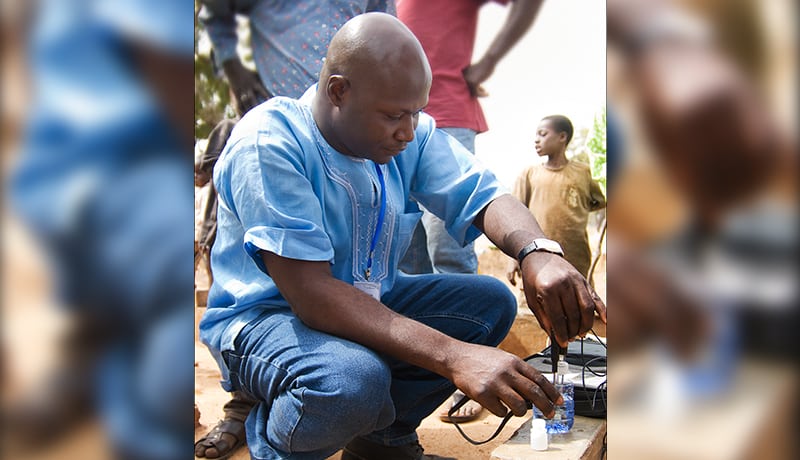
1997
DRI launched the Science Box Traveling Kits Program, which provided portable instruction modules to Nevada educators. These kits, now called Green Boxes, have become ubiquitous in Nevada schools, reaching more than 23,000 Nevada students annually.

1999 – 2008
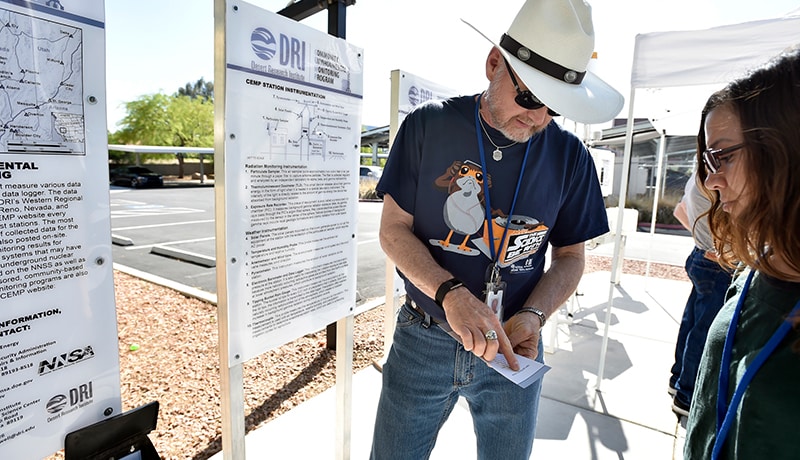
1999
DRI took over technical operations of the DOE-funded Community Environmental Monitoring Program after participating in the program since 1981, running a network of monitoring stations located in communities surrounding and downwind of the Nevada National Security Site. The CEMP is still active today: a strong contingent of local citizens continues to work with DRI scientists to maintain the stations and educate the community
2001
DRI scientists began demonstrating the effectiveness of “TRAKER”—a vehicle outfitted with state of the art air sampling equipment—to urban air quality officials. This new technology, invented by DRI researchers, allowed resource managers to pinpoint sources of dust pollution and target key areas with dust abatement efforts in rapidly growing Las Vegas, improving the city’s air quality.

2005
DRI researchers successfully used wildlife detection dogs to track and locate threatened desert tortoises in the Mojave Desert to allow for improved monitoring and protection of the population. (Image credit: Kurt Moses/NPS.)
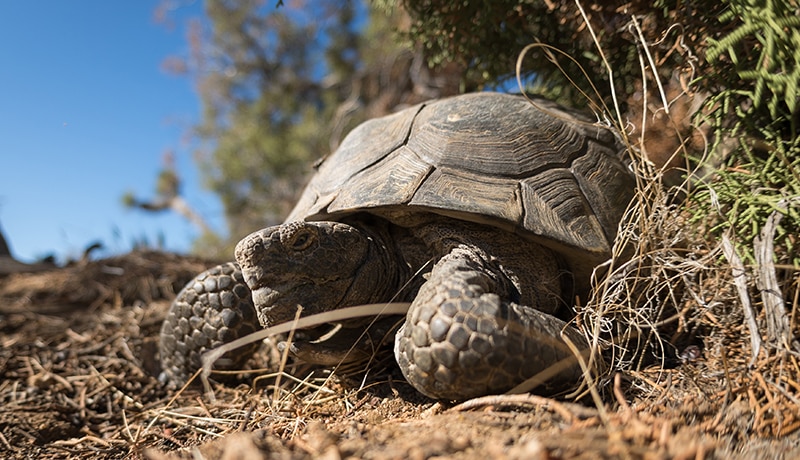
2005
DRI air quality experts collaborated with Chinese researchers to help preserve the Terra Cotta army, artifacts dating from 221 BC from the Qin Dynasty that were deteriorating due to poor air quality.

2009 – 2018
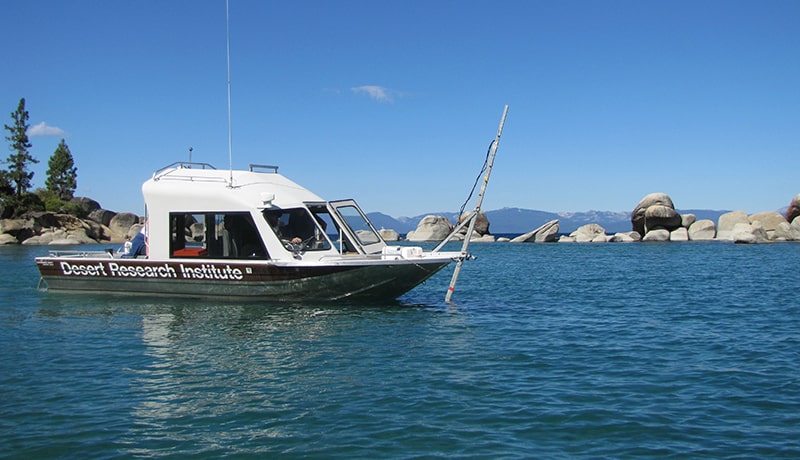
2013
A team of scientists led by DRI completed a multi-year project to evaluate the nearshore ecology of Lake Tahoe, forging a coordinated monitoring and evaluation effort between scientists and resource managers across the Tahoe Basin.
2016
In collaboration with the Terry Lee Wells Nevada Discovery Museum, DRI launched Science Distilled, a lecture series that makes cutting-edge research approachable and provides community members with an opportunity to talk with local scientists. The series features six talks annually, on topics ranging from cybersecurity to the ecology of snow.
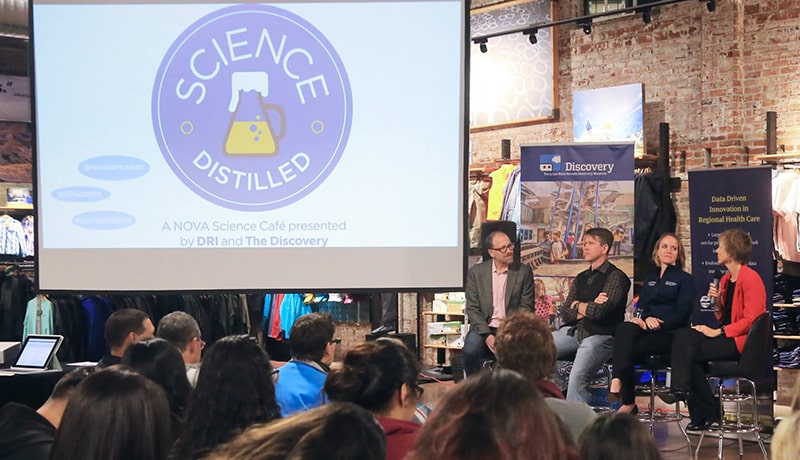
2017
The Desert Research Corporation, the commercialization arm of DRI, successfully raised venture capital funding for Tu Biomics Inc. In conjunction with DRI’s soil and molecular biology scientists, Tu Biomics is driving the development of organic antifungal chemicals as a cost-effective alternative to currently available options.
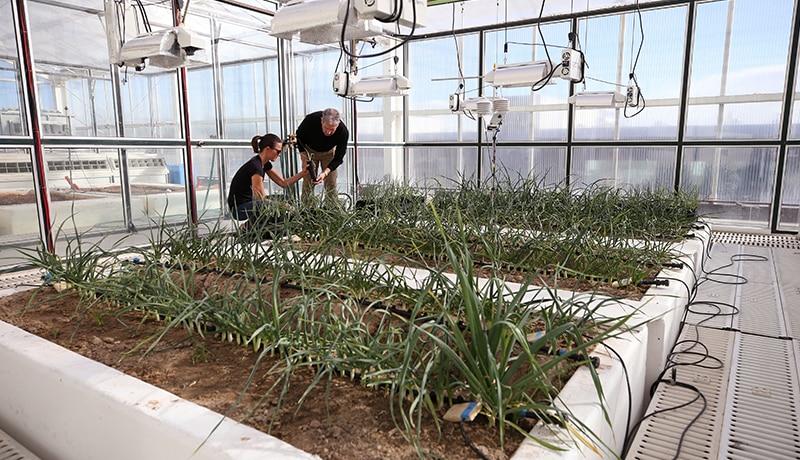
2018
Using ice core records, DRI researchers identified a connection between lead pollution and the rise and fall of ancient economies like the Roman Empire. Their findings were listed among the top 100 science stories of the year by Discover magazine.
